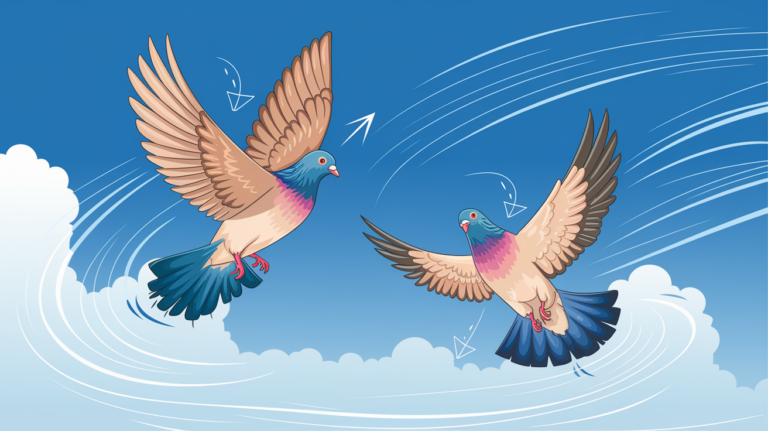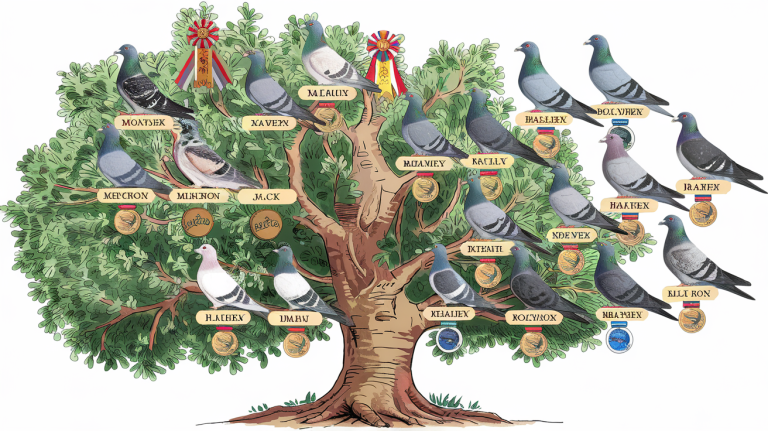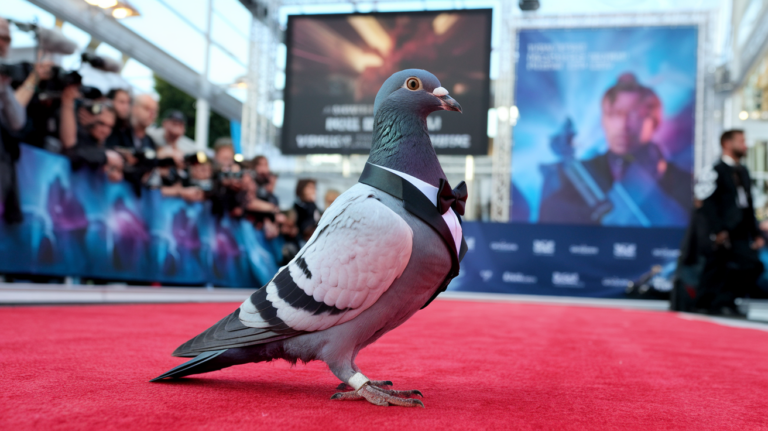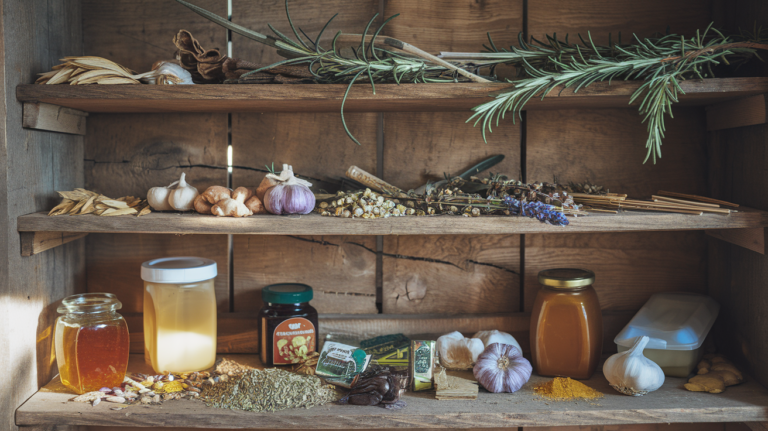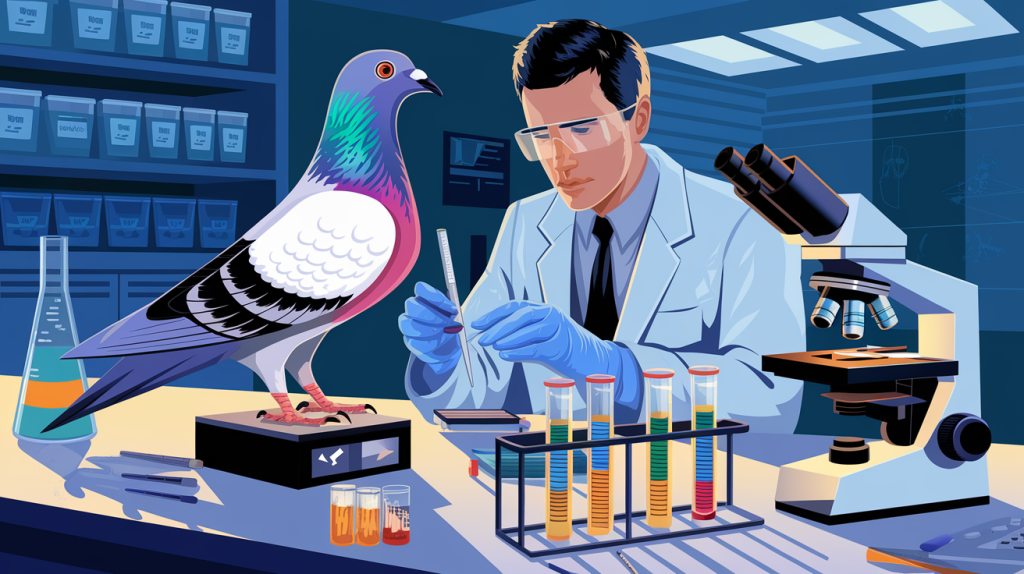
For serious pigeon breeders, understanding the math behind breeding racing pigeons like inbreeding coefficients and genetic percentages is essential for making informed decisions in your breeding program. Whether you’re trying to preserve champion bloodlines, increase consistency, or improve your chances of producing winning racers, the math behind genetics can give you a serious edge.
In this article, we’ll break down how to calculate inbreeding percentages step-by-step, explain what those numbers really mean, and show you how to use this information to build a stronger, more successful loft.
📌 What Is an Inbreeding Coefficient?
The inbreeding coefficient (often abbreviated as “F”) is a percentage that represents the probability that two alleles (copies of a gene) in a pigeon are identical by descent—meaning they were inherited from a common ancestor.
In simpler terms, it tells you how closely related the parents of a pigeon are, based on shared ancestry.
A higher inbreeding coefficient means more shared genes, which can lead to greater uniformity and predictability in your offspring—but also comes with the risk of reduced genetic diversity if done improperly.
📊 Why Inbreeding Coefficients Matter in Pigeon Racing
In pigeon racing, breeders often use linebreeding (a controlled form of inbreeding) to concentrate the genes of a superior bird—often a top-performing racer or breeder.
When done correctly, this can lead to:
- More consistent performance
- Better breeding potential in offspring
- Preservation of dominant traits from a super pigeon
But if the coefficient gets too high, it can also result in:
- Weak immune systems
- Poor athletic ability
- Reduced fertility
This is why understanding the math is critical—it’s not just about pairing good birds; it’s about pairing them smartly.
📐 How to Calculate Genetic Percentages Step-by-Step
To calculate genetic contribution percentages, you need to understand how much DNA a pigeon inherits from its ancestors across generations.
Here’s a simple breakdown:
| Relationship | Genetic Contribution |
|---|---|
| Parents | 50% each |
| Grandparents | 25% each |
| Great-Grandparents | 12.5% each |
| Great-Great-Grandparents | 6.25% each |
| Great-Great-Great-Grandparents | 3.125% each |
These percentages are additive. So, if two pigeons share the same grandfather, each contributes 25% of his genetics to the offspring, meaning there’s a common genetic influence of 25% from that grandparent.
🔢 Example: Calculating Inbreeding Coefficient
Let’s walk through a simple example:
- Let’s say Pigeon A is paired with Pigeon B.
- Both Pigeon A and Pigeon B have the same father.
- That father contributes 50% to each parent, and thus becomes a shared ancestor.
To calculate the inbreeding coefficient of their offspring:
- Find the paths through which the common ancestor contributes to both parents.
- Multiply the genetic contributions for each path.
- The father contributes 50% to each parent, so:
- 0.5 × 0.5 = 0.25
- The father contributes 50% to each parent, so:
- The inbreeding coefficient for their offspring is 25%.
This means there’s a 25% chance that any gene in the offspring is inherited from that one common ancestor on both sides.
💡 Linebreeding vs. Inbreeding: What’s the Difference?
While often used interchangeably, there’s a subtle but important difference:
- Inbreeding usually refers to very close pairings, like father-daughter, mother-son, or brother-sister.
- Linebreeding refers to pairing birds that share a common ancestor further back in the pedigree — like a shared grandparent or great-grandparent.
The goal of linebreeding is to maintain the strength of a superior bloodline without the risks that come from close inbreeding. Many top breeders aim for inbreeding coefficients between 28%–34% when linebreeding to a dominant bird.
🧠 Hybrid Vigor vs. Genetic Predictability
Sometimes breeders opt for outcrossing, which means introducing completely unrelated genetics into their loft. The goal here is to create hybrid vigor (heterosis) — where the offspring may benefit from increased vitality, speed, or intelligence.
But it’s a gamble.
With linebreeding and controlled inbreeding, you trade a bit of hybrid vigor for more predictable traits and greater breeding consistency.
That’s why understanding the math behind breeding racing pigeons and inbreeding coefficients helps you find the perfect balance: not too much inbreeding to weaken the line, but not so little that you lose the traits you’re trying to preserve.
🧮 Using Pedigrees to Calculate Coefficients
The easiest way to calculate inbreeding coefficients is by studying the pedigree chart of both parents.
Here’s a quick guide:
- Start by tracing common ancestors on both the top and bottom sides of the pedigree.
- Identify how many generations back the common ancestor appears on each side.
- Use the formula:
F = (1/2)^(n1+n2+1) × (1 + FA)
Where:- n1 = generations back from offspring to ancestor via parent 1
- n2 = generations back to ancestor via parent 2
- FA = inbreeding coefficient of the shared ancestor (usually 0 if unrelated)
Most breeders simplify this by adding the percentages directly from a 5-generation pedigree, especially for practical purposes in small lofts.
✅ Summary: Key Takeaways
- Inbreeding coefficients help you measure how closely related two birds are.
- Linebreeding to a superior bird can improve consistency and racing results.
- Target a 28–34% genetic linkage to a top performer for best results.
- Always balance genetic concentration with diversity to avoid health and fertility issues.
- Use pedigree charts and simple math to make smarter pairing decisions.
📌 Final Thoughts
Breeding champion racing pigeons is both an art and a science. While instincts, observation, and experience will always play a role, understanding the math behind breeding racing pigeons and adding solid genetic analysis to your strategy gives you a serious advantage. Understanding how to calculate inbreeding percentages and coefficients helps you build stronger bloodlines and boost your chances of producing true racing champions.
To learn more, read this article How to Select and Pair Racing Pigeons for Consistent Success


